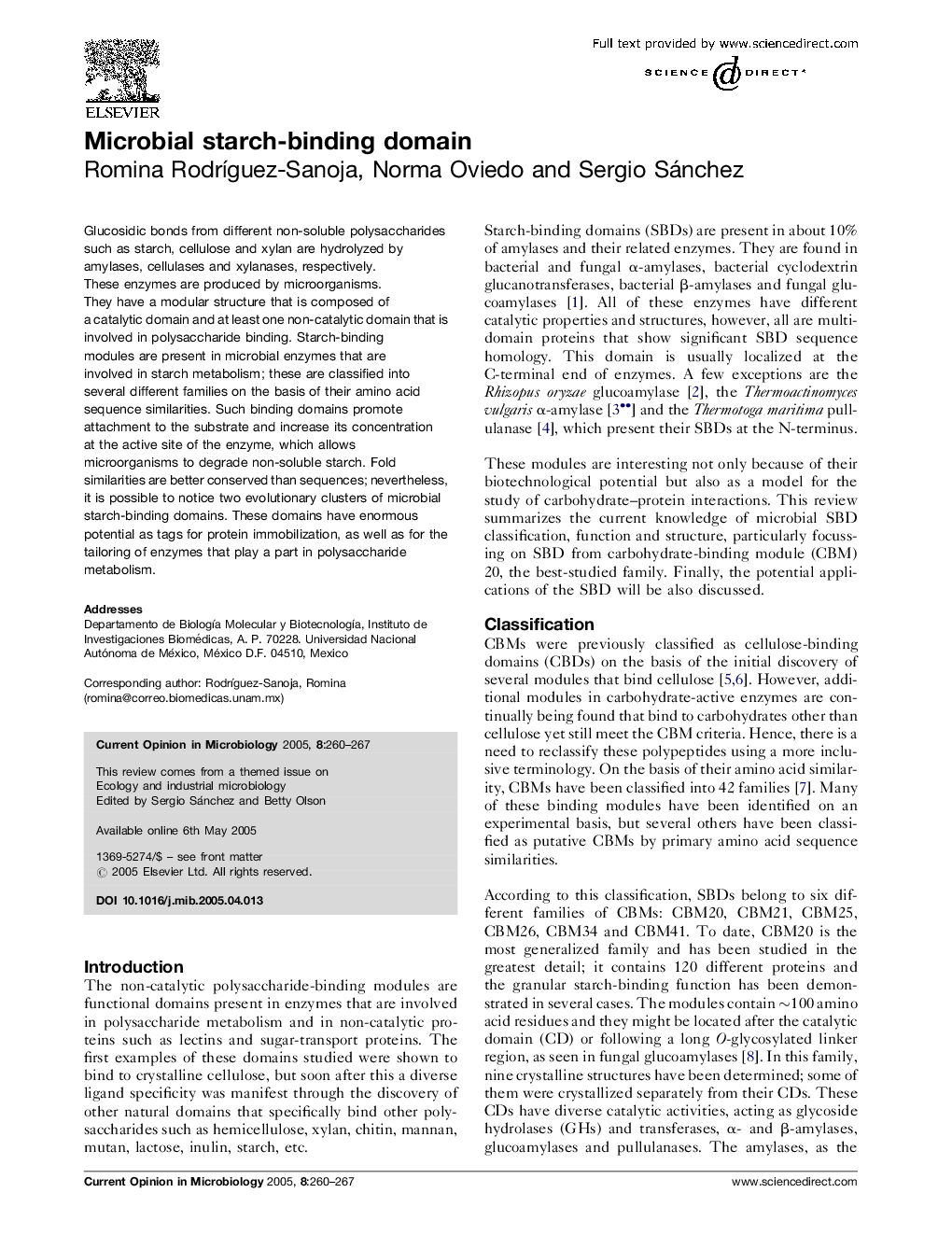| Article ID | Journal | Published Year | Pages | File Type |
|---|---|---|---|---|
| 9276632 | Current Opinion in Microbiology | 2005 | 8 Pages |
Abstract
Glucosidic bonds from different non-soluble polysaccharides such as starch, cellulose and xylan are hydrolyzed by amylases, cellulases and xylanases, respectively. These enzymes are produced by microorganisms. They have a modular structure that is composed of a catalytic domain and at least one non-catalytic domain that is involved in polysaccharide binding. Starch-binding modules are present in microbial enzymes that are involved in starch metabolism; these are classified into several different families on the basis of their amino acid sequence similarities. Such binding domains promote attachment to the substrate and increase its concentration at the active site of the enzyme, which allows microorganisms to degrade non-soluble starch. Fold similarities are better conserved than sequences; nevertheless, it is possible to notice two evolutionary clusters of microbial starch-binding domains. These domains have enormous potential as tags for protein immobilization, as well as for the tailoring of enzymes that play a part in polysaccharide metabolism.
Related Topics
Life Sciences
Immunology and Microbiology
Microbiology
Authors
Romina RodrÃguez-Sanoja, Norma Oviedo, Sergio Sánchez,
